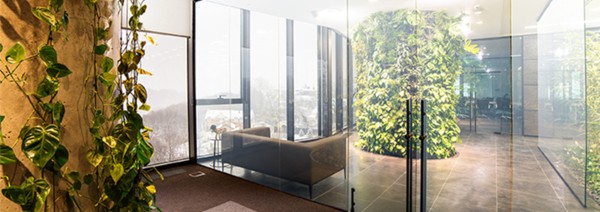Why tenants are seeking green options

While the pool of available properties that fall into the category are few and far between in Auckland - the growing appeal of “green” properties cannot be denied. There are a number of reasons that tenants are attracted to these sorts of offices - some of which are concrete and others more warm and fuzzy.
Demand for Green Buildings
Green buildings (as designated by a set of industry standards that vary) are those deemed environmentally responsible and resource efficient. In general certified green buildings are estimated to consume 30-50% less energy than non-green buildings. Green buildings also use an average of 40% less water, emit 30-40% less carbon-dioxide, and produce 70% less solid waste.
According to Business New Daily, “In most major cities in the U.S., at least 40 percent of office space is now Green Rated. Chicago leads the way at 66 percent certified office space, followed by San Francisco at 61.8 percent. Much of the trend is driven by a market imperative rather than a regulator compulsion. In other words, companies recognize that strategic energy management gives them a competitive advantage.
Going green to save some cash
One of the most obvious appeals of spaces that are more environmentally friendly is the potential savings related to energy, water and waste which could have a significant impact on an organisation’s expenses and therefore its profits as well. It’s become an economically smart choice for businesses, when they consider the returns from energy efficiency driven by the ecological agenda. Increasingly, the decision to go down this route is based upon financial implications alone.
In addition to amenities and improvements that are environmentally friendly, companies can supplement their efforts with programmes that encourage the use of public transport, bicycles and electric scooters, all of which emit less carbon than driving vehicles. Giving employees financial incentives to use these methods to get to the office can actually save money in the long run. This is because there will be less necessity to provide parking which is a major source of overhead, especially in urban areas. A good message combined with bottom-line savings is a win-win for management.
Wanting to tell a green story
Tenants want to tell the story of their operating in a green building that actively pursues sustainability efforts with a positive effect on the community and the environment. Companies are eager to inform their customers and employees that they are responsible shepherds of the environment. This is especially the case as global warming is recognised as a concerning phenomenon. Further, when trying to recruit the best of the best talent, Millenials are especially keen to work for a company that is actively taking steps to lessen their footprint on the planet. As companies seek to explain their values, celebrating a green workspace is a compelling thing to talk about internally and externally.
In addition to the public relations angle, there is quantifiable evidence that a green workplace translates to happier and healthier employees who are more productive in their roles. There is also evidence that they are more loyal to the company because they are proud of efforts to lessen impact on the environment which can lead to better retention in the long-term.
How do you make your property green?
No two buildings are alike and every organisation is unique in its complexities, so there is no one-size-fits all solutions for all spaces. Sometimes landlords are hesitant to make appropriate improvements, as costs can be high on the front-end and it can take a while to have a return on investment. Keep this in mind though, if the market is slow or if you are trying to attract top-tier tenants. The fact that your space is environmentally friendly could be the tipping point in getting them to sign a lease edging out your competitors with similar properties. A global survey conducted by Nielsen showed that 64% of the respondents in Asia Pacific said they are open to paying more for products and services from companies that advocate the protection of the environment.2 Taking some of these steps can help you to secure green interiors certification standards in New Zealand such as Green Star.
Common ideas are:
Air-conditioning
- Install indoor air quality monitors
- Upgrade your HVAC by purchasing a highly-efficient system that does not use chlorofluorocarbon, hydrochlorofluorocarbon or halon-based refrigerants
- Your HVAC system should have programmable thermostats and thermal storage
- Consider individual climate controls
- Walls facing the sun often become “heat islands”
- By covering them with green plant screens you will greatly reduce the heat island effect and minimize interior solar heat
Lighting
- Incorporate smart technologies like daylight sensors (that will turn out lights when not needed) and motion sensors
- Replace standard T-8 lamps with more energy-efficient T-5 lamps
- Use light wall colours and high-gloss sheens because daylight is more easily reflected off the walls and therefore less artificial light is necessary
Waste
- Recycle construction waste related to renovations and improvements
Water
- Retrofit water fixtures (including toilets) with new, more efficient models
- Water-conserving irrigation systems and plumbing, waterless urinals (which are more sanitary than standard ones) can help to conserve water
Fitout
- Install or improve windows and insulation so that they reduce thermal heat loss and save energy
- Install energy-efficient appliances such as dishwashers and refrigerators
- Only use low-VOC (volatile organic compound) for materials like paint, flooring, and furniture to create superior indoor air quality
- A green landscaped roof with drought-tolerant grasses and plants lessens the heat island effect. A green roof also helps clean the air, serves as a wildlife habitat and absorbs and filters rain that would otherwise flood storm drains.
